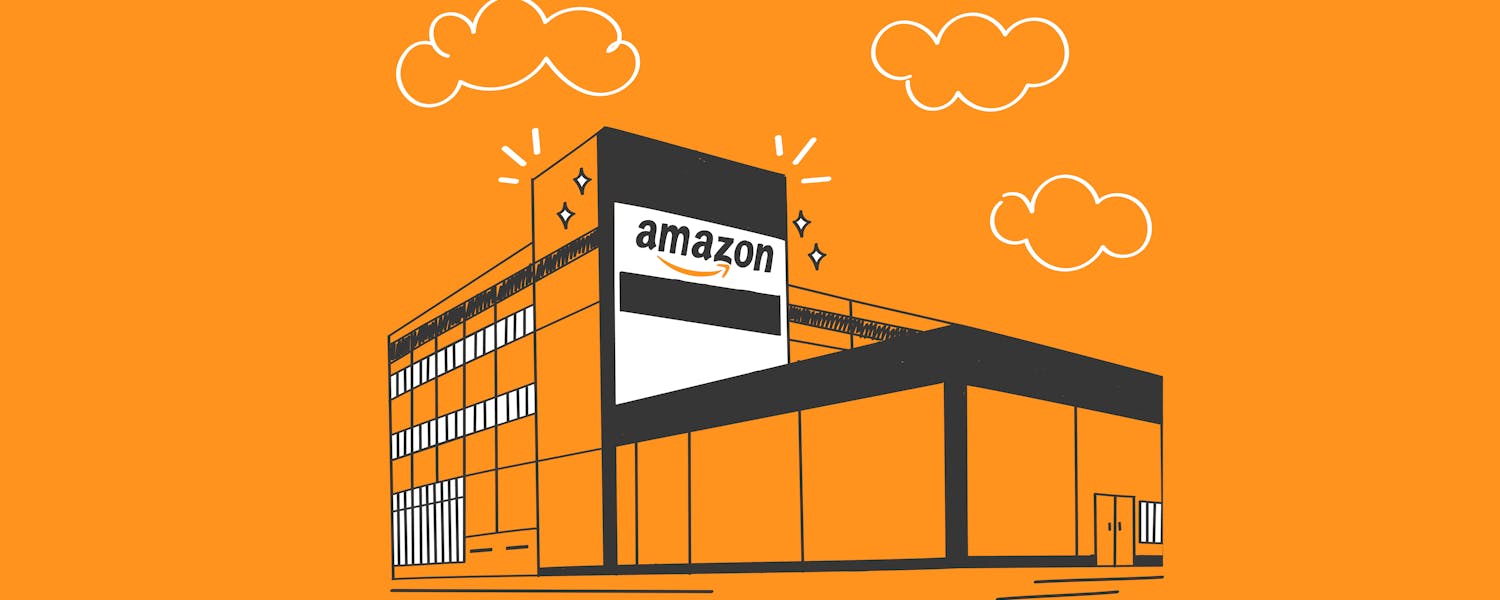Building an Empire: Amazon
Few business empires can compare to the scale and success of Amazon.com.
Amazon started a garage run by founder Jeff Bezos as an online bookstore.
However, since its 1994 humble beginning, Amazon has grown into a company worth hundreds of billions of dollars.
This company has compiled a succession of success due in part to the company's ultra-efficient supply chain infrastructure, allowing them to deliver orders within a day to dozens of countries around the globe.
However, it wasn't all easy for Amazon; it had challenges to overcome and innovative solutions to create in order to become the empire it is today.
Keep reading for a breakdown of how Amazon went from a garage bookseller to a global e-commerce conglomerate.
Customer Focused for Decades
Amazon was created with the idea of putting the customer first. Since its founding, Amazon has focused on convenience and customer experience at the forefront of everything it does.
Envato/tehcheesiong
Jeff Bezos canned this belief by stating, "We're not competitor obsessed; we're customer obsessed".
This customer focus extended beyond competitive pricing for customers; it incorporated everything from free deliveries on certain orders to same-day deliveries and developing user-friendly websites.
Amazon Overcame the Dot-Com Burst
Less than a decade after starting, Amazon was forced to navigate through the dot-com bubble burst.
This is when a number of websites and web-based companies went bankrupt due to markets being in a bubble.
During this challenging period, Amazon doubled down on two key things: innovation and expansion.
This kept the company afloat and allowed for steady growth throughout the harsh economic climate that pulled down several other large websites.
Amazon expanded its products from “just books”, upgrading into gadgets, clothing, and more options, with the promise for them to be delivered at your doorstep.
This allowed the company to bring forward a wider customer base and increase margins of return for them.
How Amazon uses Technology
Over time, Amazon's business model was getting more established. They decided to include cutting-edge technologies to help optimize orders.
The technology also helped employees manage their inventory within the logistics in the supply chain.
These developments included:
- Automation: Since their first early beginnings they’ve been adding innovation in their logistics, but it was in 2012 when Amazon bought Kiva Systems for $775 and is now incorporated as Amazon Robotics as a subsidiary.
Since then they’ve integrated robots in their warehouses and fulfillment centers.
The robots help improve packing, picking, and shipping times. - Algorithms: Sophisticated algorithms help predict when a customer will demand a product.
That way, retailers know which stock to have more and which to reduce. - Delivery Network: Amazon had to increase its delivery network to meet same-day deliveries as promised. This included better placement of sortation centers and stations, which helped reduce the delivery costs and time it took to ship orders.
- Amazon Prime: Launched in 2005. It quickly became a hit in the online commerce world. It helped to give two-day free shipping to all Prime members, which is like a loyalty program to encourage customers to keep shopping and repeat purchases.
- Amazon Web Services (AWS): This was the start of cloud computing and is now one of Amazon's best revenue streams because it's proven to be a reliable server infrastructure.
In 2021, Amazon generated $24.8 B in operating profits, while AWS was responsible for $18.5 B, that’s 74% of the profits and was credited with having 31% of the market share of cloud services.
Customer Focus
Envato/Prostock-studio
As we've mentioned, Amazon was purely customer-focused. As Jeff Bezos once said, "'Be stubborn on vision, but flexible in details," which can be applied to how his employees should put customer satisfaction as their vision.
Additionally, Amazon has always worked to go above and beyond what customers expect whenever they order from the website.
This focus has led to Amazon developing programs like Prime Now to keep consumers happy. Prime Now is great for those living in selected cities who can benefit from one or two-hour delivery services.
Amazon also has a "Buy It Again", and "Subscribe & Save" initiatives. These are there to help increase how often customers purchase for their favorite online retailers, which can boost sales.
Additionally, it allows the company to monitor essential data that can be used for supply chain optimization purposes.
Digital supply
Amazon has shown to be a leader on migrating their products into the digital realm.
Envato/Weedezing_photo
Among their efforts, they’ve made their content available through streaming services, starting with e-books, but soon making audible versions of them, building a music streaming service to quickly jump into video content to offer to their prime subscribers.
They’ve developed several devices like Kindle in 2007, Kindle for Web, and the Fire Stick in 2011.
The Fire Stick was an exciting development to allow customers to watch streaming sites on the go.
Moreover, Amazon got into smart home technology by releasing Alexa in 2014 and then buying the home automation company Ring in 2018.
Since then, their devices have only gotten smarter.
Highlighting Amazon Prime
Back in 2019, Amazon announced that they would shorten shipping times to one day from two days for Prime members. This efficiency was achieved throughout the supply chain stages, including:
- Better transportation was used as there was a higher demand for delivery vehicles, cargo, and carriers.
- The company also invested in Amazon Flex to offer independent drivers opportunities to deliver items and work for themselves.
- Amazon also ensured the fulfillment centers holding stock locations were in more convenient pickup locations for delivery drivers.
- Machine learning was also used. It started a digital disruption against competitors as it employs data in real-time.
Alexa is just one example of how machine learning is still being developed, but it can optimize everything from the supply chain, like delivery routes or order volumes. - 'Last-mile delivery' methods include Amazon Lockers and Hubs in nearby pickup locations to make it easier for customers to pick up or return orders, reducing delivery costs and emissions.
Overcoming Concerns
Envato/Masson-Simon
Amazon has raised the bar when it comes to fast delivery and ensuring customers are happy compared to other online retailers.
However, there have been concerns that employees in subordinate roles are not being treated fairly.
For example, their expansion over the years has critics worried about the working conditions and salaries at fulfillment centers. Amazon responded by making changes. These included:
- Increasing employee minimum wages, in 2018 they announced to increase their lowest salaries to $15 an hour.
- Setting sustainable goals, and to do so, they’ve invested $1.2 B to provide education and skills training opportunities to their employees
- Improving ethical standards in the workplace
Final Thoughts
Amazon has grown massively as an e-commerce powerhouse since starting as an online bookstore back in 1994.
It now highlights innovation, customer focus, and adaptability to be at the level it is at today in the online retail world.
From understanding the ins and outs of Amazon, we believe it may offer tips and perspectives on how to overcome any potential hurdles for your own businesses and why consistent growth is important.





